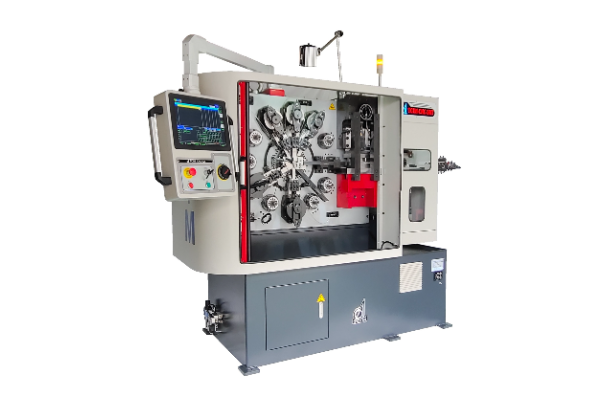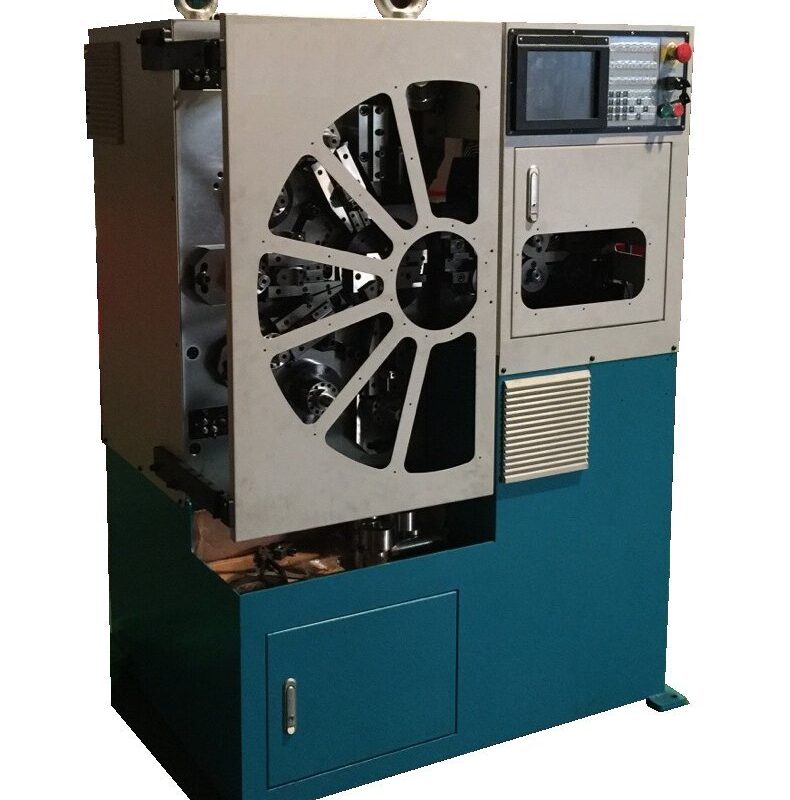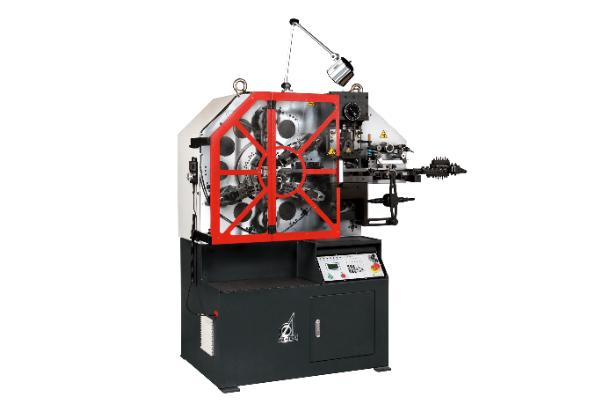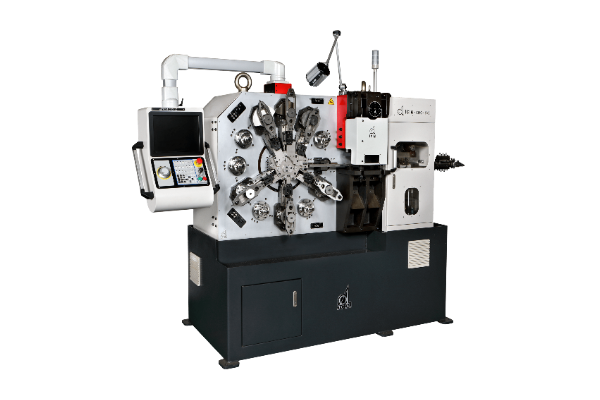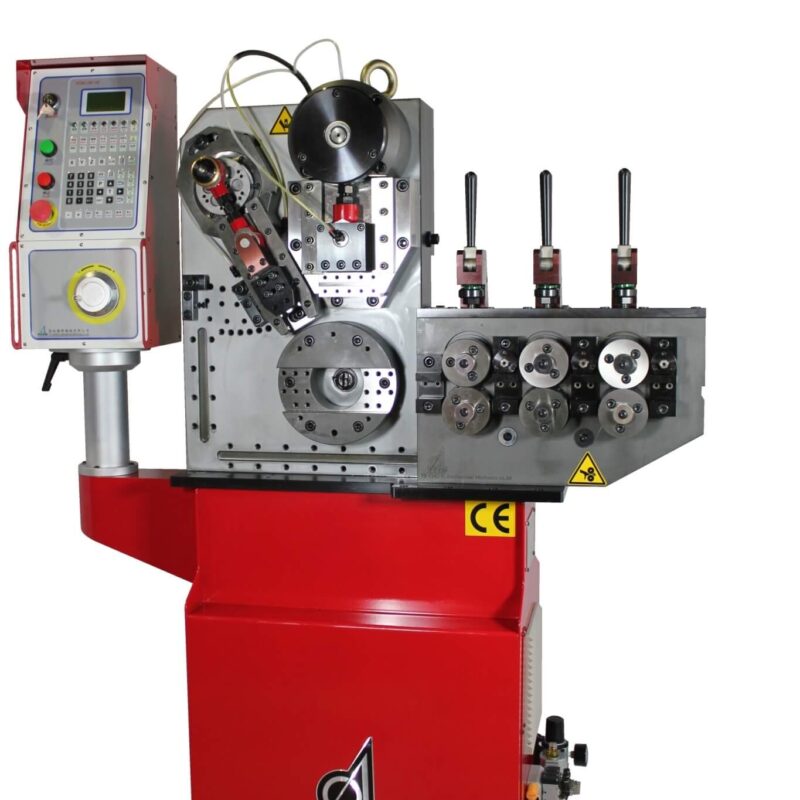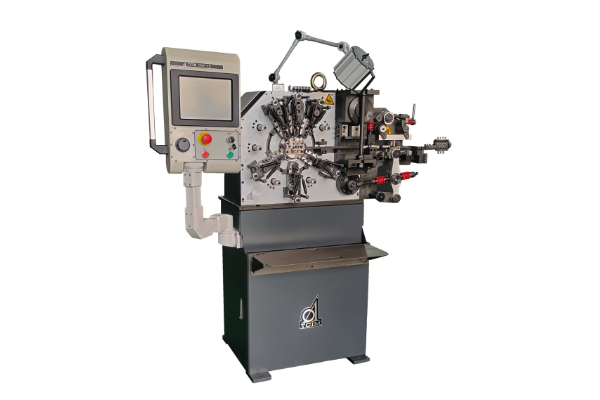
SPECIFICATION
Wire Diameter 0.2-1.6 mm
Thickness of Strip 0.1-0.9 mm
Width of Strip 20 mm
Hardness of Material: HV400
Standard Axes 1
Max. Production Rate :200/ 300 pcs/min
Max. Feed Length 150 mm
Press Capacity 5 ton
Slide Capacity 0.8 ton
Press Stroke 10 mm
Slide Stroke 25 mm
Slide Accessory 6
Machine Dimension 520*800*1500 mm
Machine Weight 550 kgs
Features:
Hybrid Machining Process: The TM wire/strip machine boasts CNC Servo Control, equipped with I/O ports for seamless connectivity to external devices such as tapping, welding, and press machines. This unique feature empowers TM users to customize programs, initiating external devices to collaborate seamlessly with the TM machine. In today’s manufacturing landscape, customers seek not only individual machines but also automated production lines. The TM machine meets this demand by providing a solution that not only saves labor but also accommodates future requirements. Explore one of the production lines we’ve designed through the following link:
Material Savings: Traditional press machines necessitate a continuous material chain for feeding, requiring manual intervention if not in place. In contrast, the TM machine operates efficiently without a material chain, allowing for the use of narrower materials compared to press machines. Consequently, TM users significantly reduce material consumption for the same component, resulting in substantial cost savings compared to competitors.
Easy Maintenance and Setup: Unlike press machines with fixed die and tool positions and strokes, the TM machine offers easy adjustment capabilities, particularly for specific die and tool modifications. This flexibility simplifies maintenance and setup procedures.
Automation Production Line Integration: The inherent features of the TM machine make it seamlessly integratable into automation production lines. Alternatively, we can customize an automation production line for your specific requirements, offering a comprehensive Turnkey Solution.
Comparison with Similar Machines:
Spring Coiler: More suitable for forming round wire, incapable of performing punching operations, and tends to have slower production speeds.
Press: Limited to single movements, inconvenient independent adjustment of single dimensions, requires complete tool-set changes, unsuitable for connecting external equipment, generates significant waste, and poses a high risk to operators.
Future Development:
Although forming machines currently occupy a small market share due to a shortage of qualified technical personnel, their superior production efficiency, stability, multiple functions, and safety position them favorably compared to presses. As production technologies advance, forming machines are anticipated to gradually replace presses in the market. As technical personnel become more accustomed to forming machines, their adoption is expected to grow, leading to a significant increase in the market share of forming machines.

